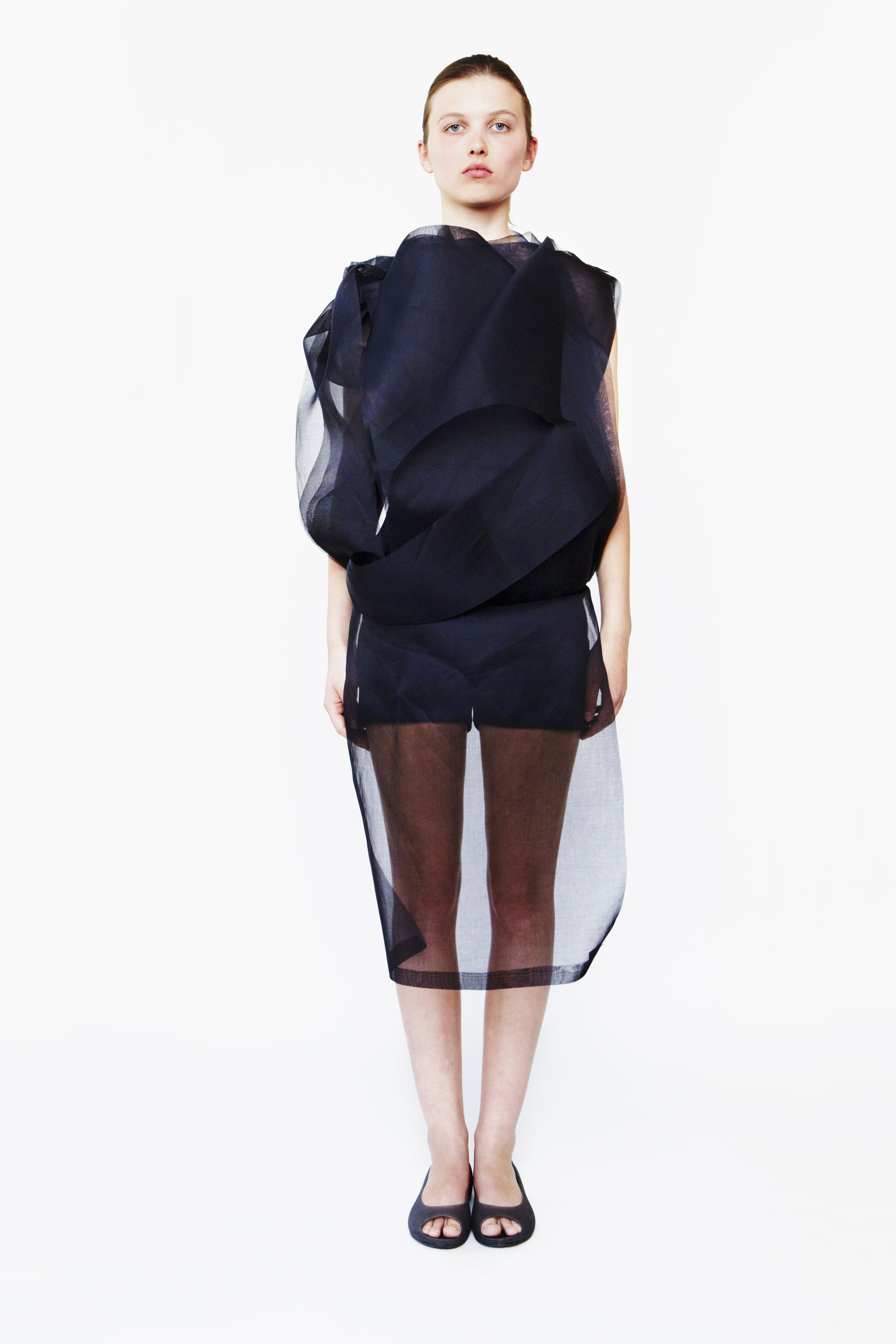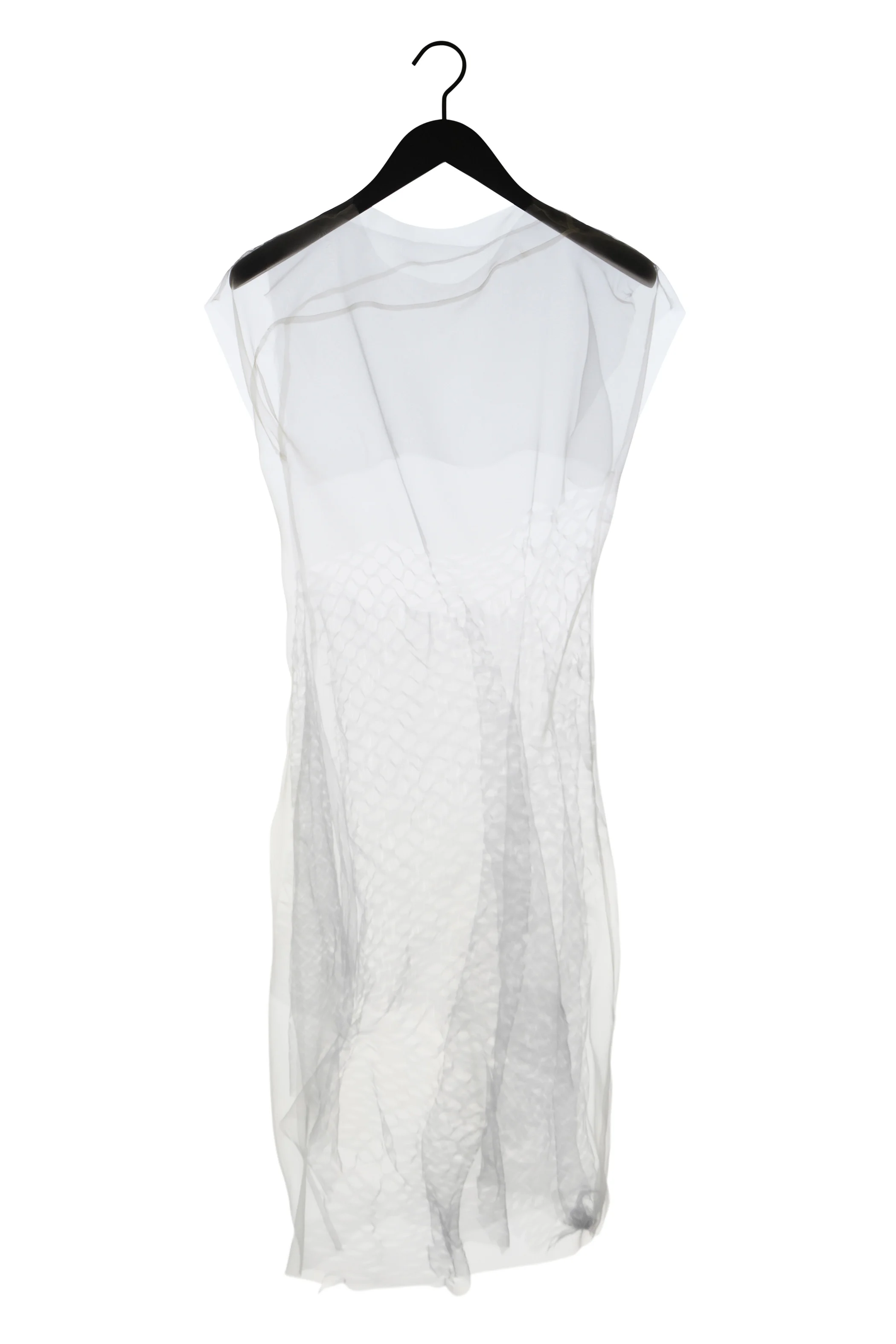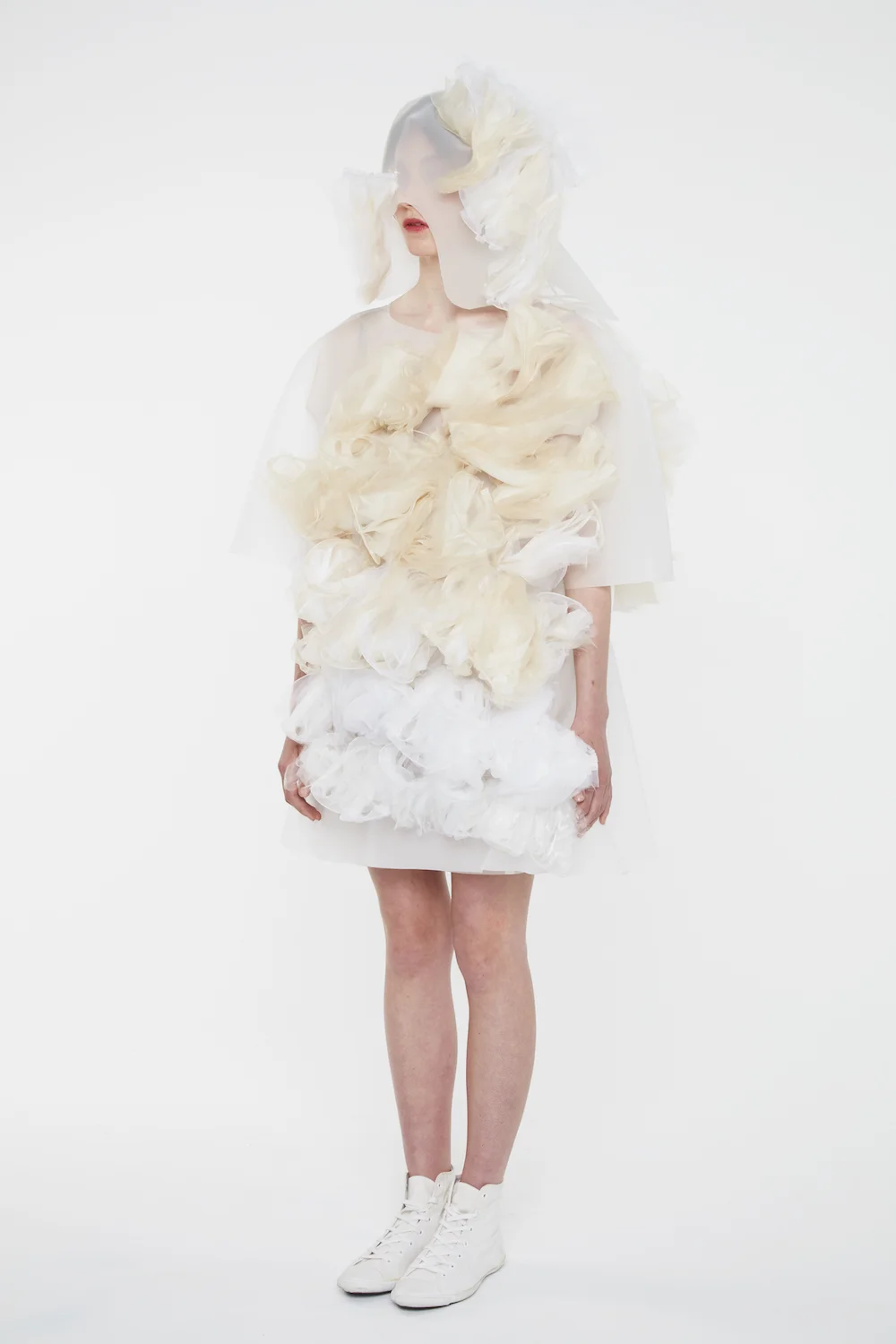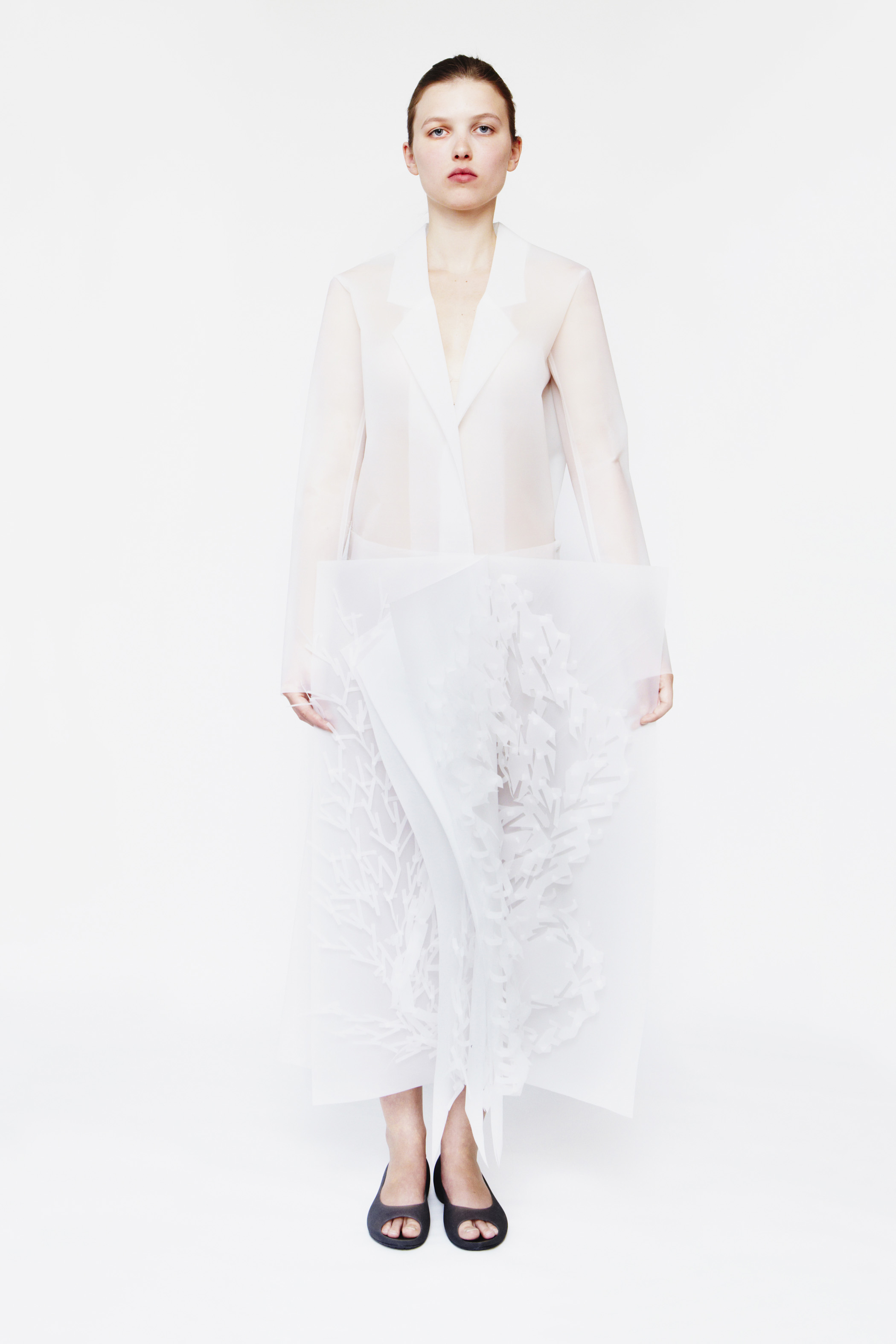Ying Gao
Ying Gao
Interview Irina Romashevskya
Images Courtesy of Ying Gao
Internationally acclaimed Montreal-based fashion designer Ying Gao is known for her keen eye for detail and multimedia approach to garment construction. Using statistics and social criticism, programming and philosophy, along with traditional tailoring and dressmaking techniques, she creates some of the world’s most conceptual and artistic clothing pieces.
Irina Romashevskaya: What is your fashion background? Do you consider yourself a fashion designer or an artist working in fashion?
Ying Gao: I’m a fashion designer, not an artist. I graduated from both HEAD (Haute École D'Art et de Design de Genève) and Université du Québec à Montréal. I’ve been working as a fashion designer for over 15 years. I started to be interested in new technologies and media arts while I was completing my Master’s Degree in Interactive Multimedia 13 years ago. I believe that fashion in order to be meaningful needs to be both radical and deeply experimental, and consequently my designs elicit interest in the field of avant-garde fashion as well as in the art world. In the past 6 years my work has been shown in the museums worldwide, alongside renowned designers such as Issey Miyake, Hussein Chalayan, and Helmut Lang. The art collector Dakis Joannou has recently acquired the Playtime piece, which was featured in the film The Capsule and later in the Deste Fashion Collection, installed in the windows of Barneys New York’s Madison Avenue flagship store.
I often say that fashion is an “encounter with time”. The future belongs to those who use the technologies of their time. But both technology and fashion embody the most fragile and ephemeral aspects of our culture in a way that, what is cutting-edge today will be old news tomorrow. Fashion designers have known for a long time that they are working with a fleeting material that will never be timeless. However, the integration of electronic technology seems to modify the creative process, both in terms of the surface and the structure of garments.
What inspired you in the first place to move towards creating a mixed media approach in your work? How did you start on that path?
I’m a designer on the borderline of media arts and fashion design. I use two distinct methods of integrating technology with fashion design. The first method is direct, meaning that microelectronic technology is physically integrated into garments. The challenge, in terms of fashion design, is to construct garments with free-flowing dimensions, affording the potential for numerous shapes unlike the fixed measurements of so-called traditional garments. My interactive projects propose an in-depth study on the garment’s adjustable structure and the integration of pneumatic and interactive technologies. These garments appear vivid, ephemeral and fluid in shape. One of the dresses vibrantly unfolds when triggered by a ray of light, another one breathes gently as it’s touched by a gust of air. The variety of physical shapes emerges from the art of folding paper, giving a poetic aesthetic form to the ethereal and intangible. It forms a creative framework in which media devices (sensors, cameras, microprocessors) become components of the garments. Secondly, I use a more indirect method where technology is used as my source of inspiration; it is the base of my creations, but it’s invisible in the garment. Some works are also based on the unconventional application of software. For example, in the Indice de l’indifférence project I used the data of an online survey to modify the pattern, angle and width of a man’s shirt according to the indifference of voters participating in a survey.
There is a lot of philosophy behind each of your creations. How would you describe your design aesthetic?
I’m best known for my view on fashion design: It’s radical, experimental and slow.
You also teach at UQAM, Université du Québec à Montréal, which seams to be a perfect addition to your work since all of your pieces are as much about concept and creative process as about finished product. When did you start teaching?
I’ve been teaching since 2003. I love it. I hope to encourage my students to consider the importance of innovation in fashion design. The world evolves only when we innovate.
What inspires you in your work and gives you pleasure?
My biggest hobby is Instagram. What a pleasure and what a waste of time! I had never thought I could be a photographer but over the last 8 months on Instagram, my 650 followers have proven to me that, indeed, I am quite capable of wasting time on yet another social network! My second hobby consists of documentary films, which I watch voraciously, encompassing a whole range of subjects. The subjectivity of documentary filmmakers fascinates me. I love to look through the eyes of a stranger and to understand the world from his or hers perspective. My third hobby is to feel anxiety for several hours every day. Gilles Lipovetsky defines “hypermodern times” as a contemporary period that reflects a radical intensification of modernity, including its obsession with finance, science, democracy and individualism. Each aspect of existence includes excess and a certain duality, where more than ever frivolity masks a deep anxiety. This anxiety is something that I see and I live through every day. Paradoxically, it makes me feel alive and pushes me forward. What motivates me the most is incertitude and failure.
What can you tell us about Slow Fashion (Wear) concept? What is your relation to it? Would you consider yourself a participant in the Slow Movement altogether?
Slow wear is a current trend that’s appeared in response to the abundance of products and images created by the fashion industry; its promoters think we should own less, but better-designed pieces. My past and upcoming collections are created with the clear goal of presenting slow wear as an alternative to the fast-paced production cycle of contemporary fashion.
How did you find out about sensory technology? What moved you to create interactive clothing?
The origin of the Playtime project, for instance, can be traced to one of my favorite films, which bears the same name. I often think of this piece as the transformation of one unique vision into another unique vision. The cinematographic masterpiece that Jacques Tati created in 1967 was described by the French author François Ede as a “feat of haute couture”, which is particularly fitting when you consider that the film Play Time is really the main source of inspiration for this project. Playtime exists at the intersection of fashion design and media arts. It references five key scenes of Tati’s film. The two garments, reactive and photosensitive, create an interactive experience that encompasses the garments themselves, the spectators and their environment. The work focuses on the idea and the conceit of coats that can physically metamorphose. In addition, I have outlined a new possibility for experimental modular construction of garments through the integration of electronic and digital technologies. Mixed media content, such as image projections, will augment the work, becoming an integral component of the garments. The work thus becomes a reflection about the function of garments as being untethered and dislocated (Augé,M., 1992) within our hypermodern society, a concept, which the film encapsulates before its time.
This project proposes a "mise en abîme" of the garment, the spectator and the built environment. The echoes, resonances and auditory superposition’s of Tati’s film inspired me to create garments that react to light and then become visually unfocused. When one attempts to capture an image of the dress using a photo or video camera, for instance in the context of a runway show, the garment transforms and fragments; it deconstructs and becomes vague and unfocused. Sensors and motors concealed within the garment, as well as custom software running on a microcontroller, create the system that analyses the movement of light and the movement of bodies in space, establishing an interactive dialogue between the garment and the camera.
Do you think there is room for sensory technology in everyday fashion? Do you see a future for interactive clothing?
I’d like to think that my garments are not gadgets, but rather design objects that have been extensively reflected upon and have a conceptual and esthetical "life", corresponding to their technological mission. As for sensory technology in everyday fashion, I think that in certain areas, such as extreme sports, military, and medicine, it’s already there. And in the future it’s possible that our everyday clothes could become communication tools (although it could take some time) as methods are developed to facilitate the integration of these devices.





